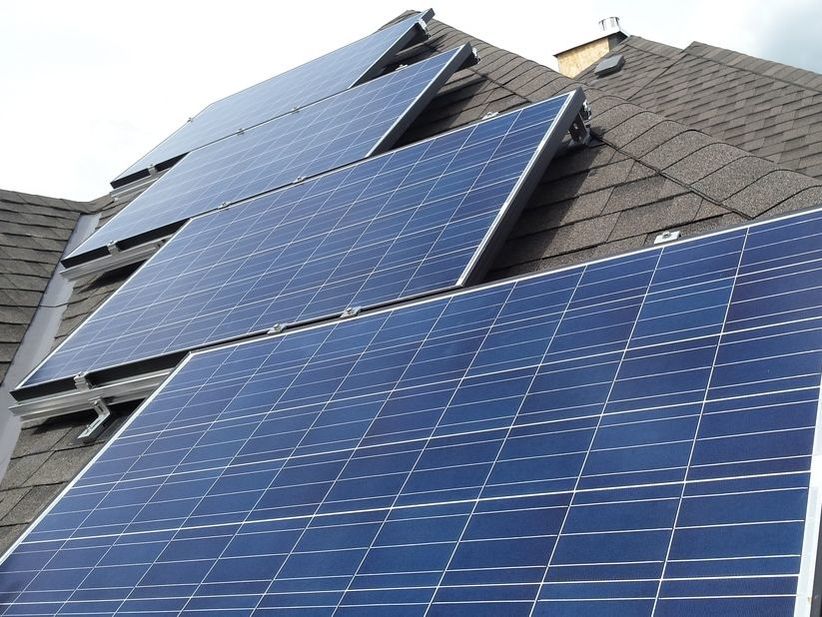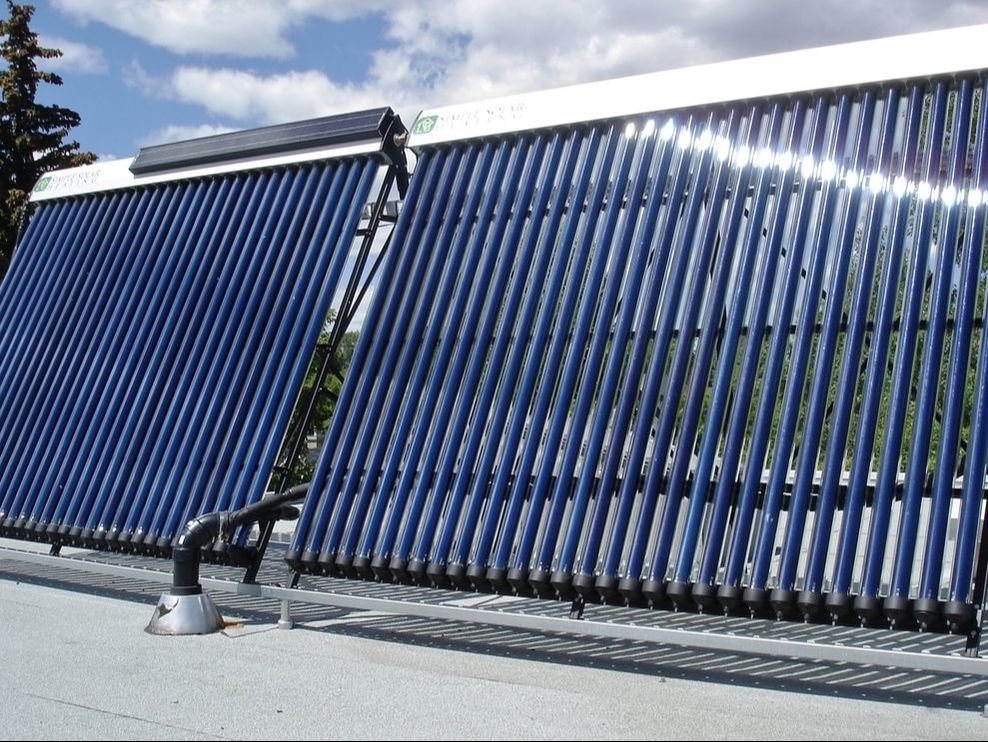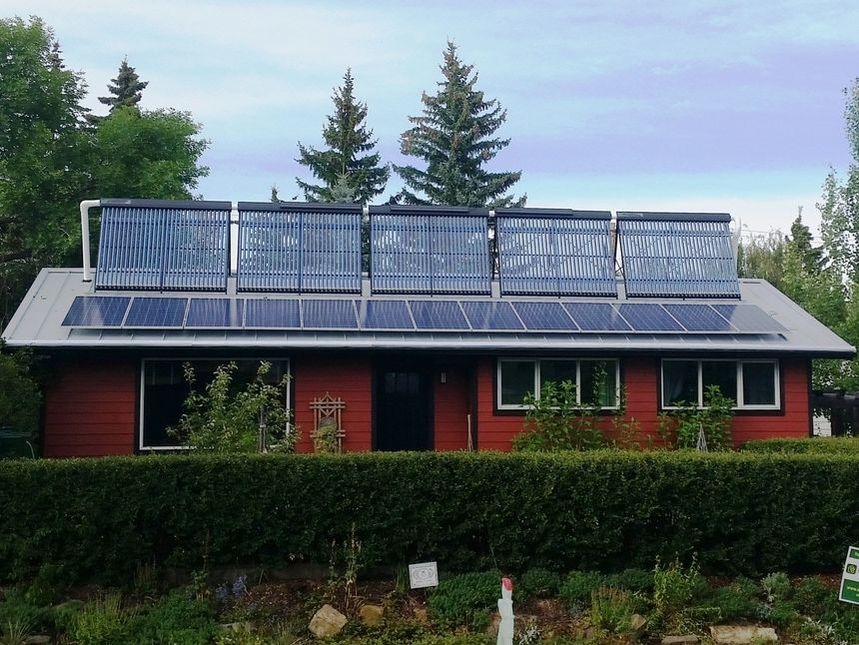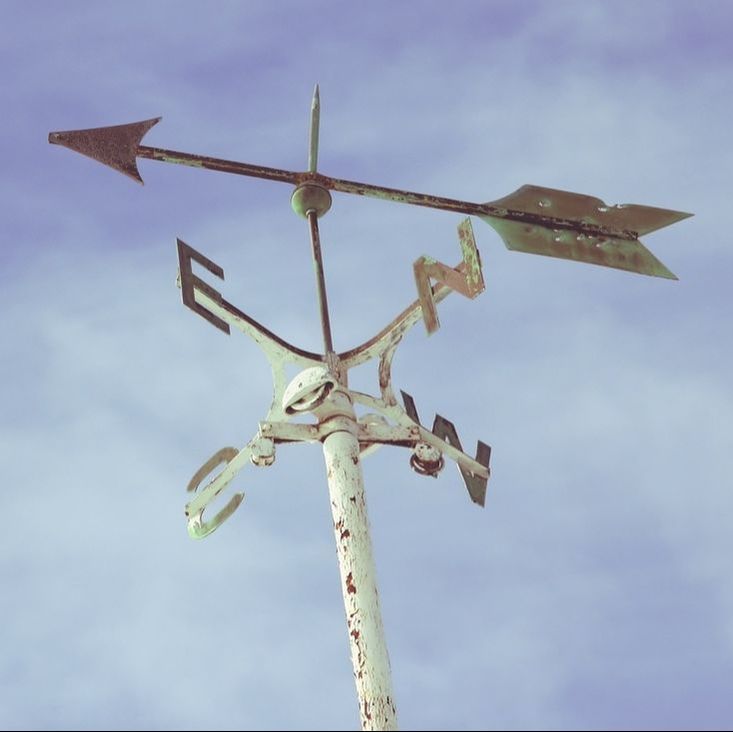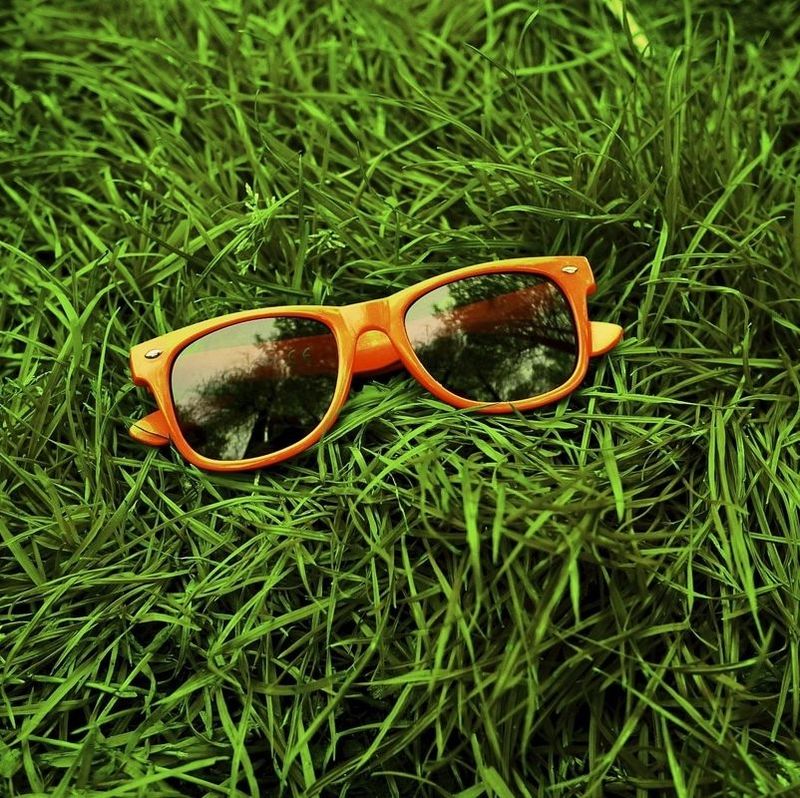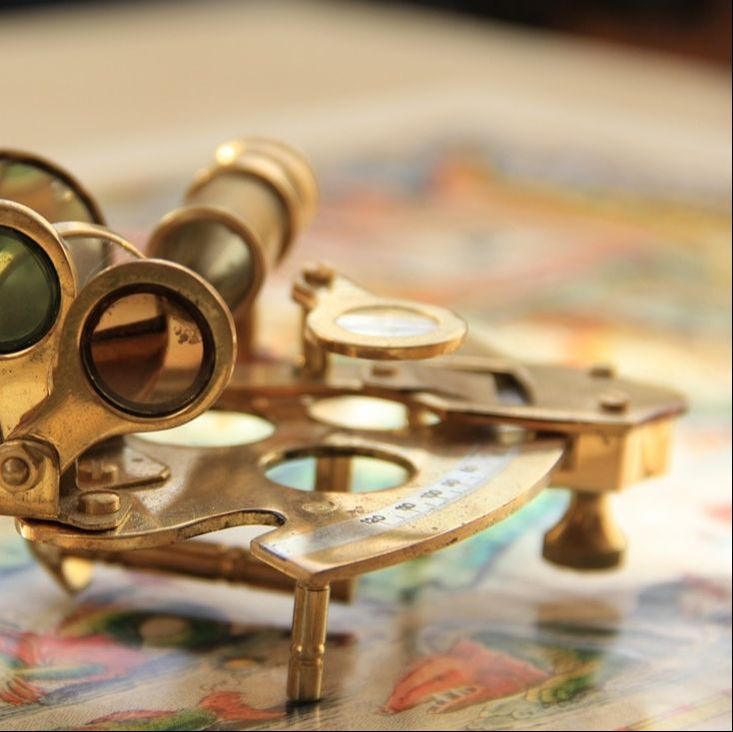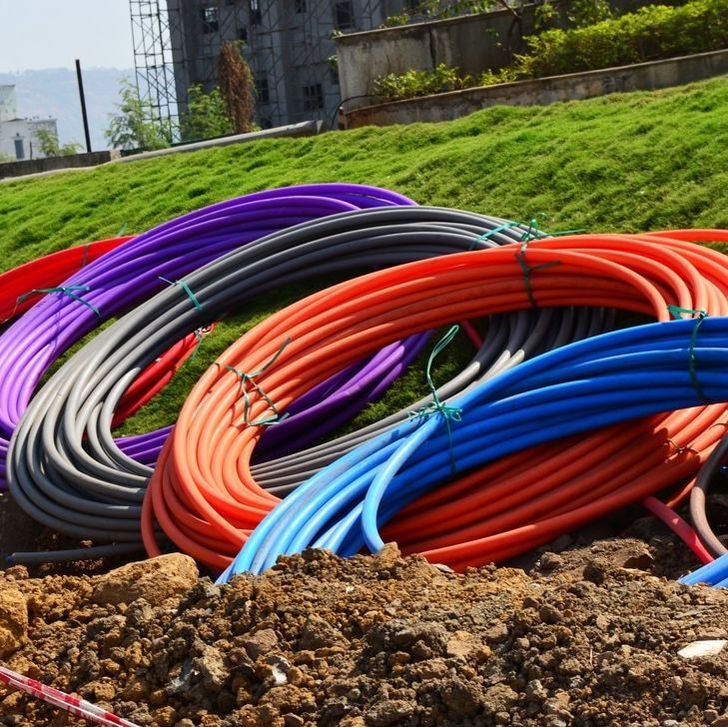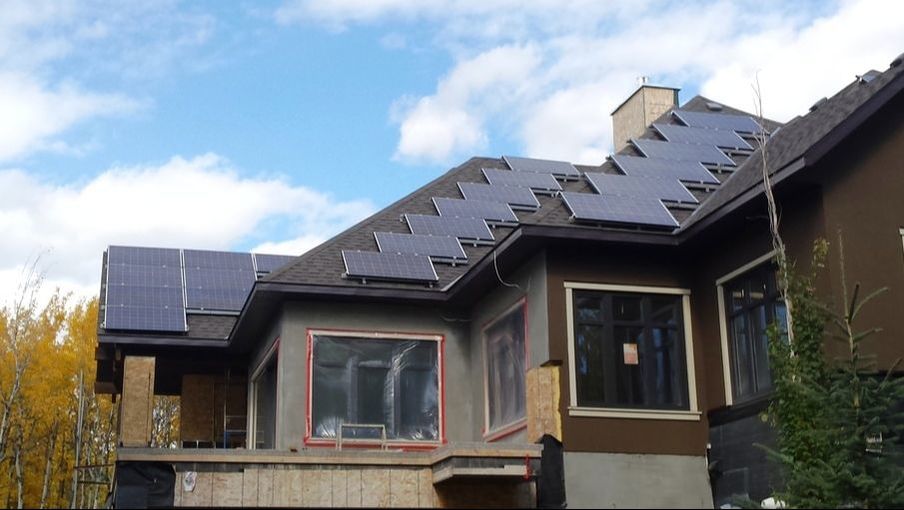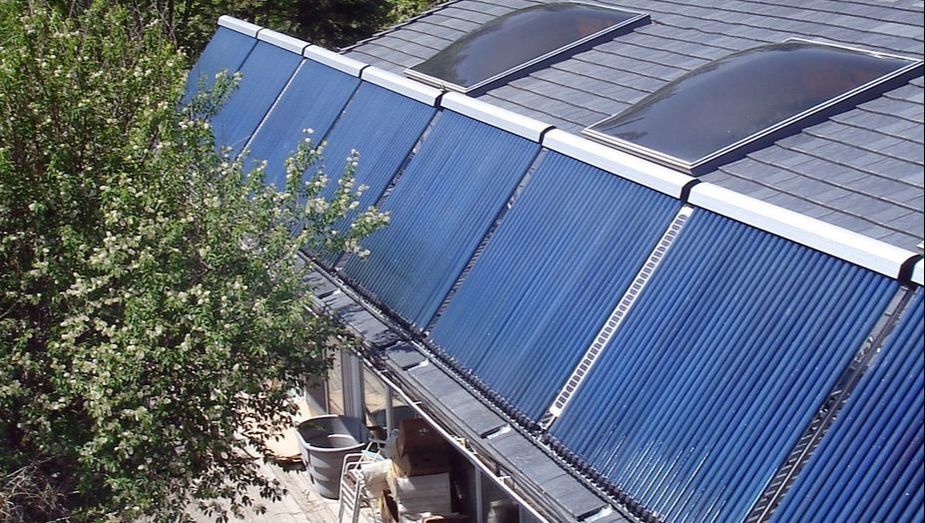Planning Your Solar Power System
|
Start by deciding what type of solar power system you want. PV, thermal, or a combination of both. Simple Solar is one of only a handful of companies in the world with the capacity to combine PV and thermal systems. A PV system is made up of solar panels, racking, an inverter, and an energy meter. A thermal system is made up of solar collectors, racking, a pump station, storage tank, and energy monitor (optional).
|
Next you should figure out where to put your system. Most of the solar hardware will go in your utility room but you'll need space outside your house to mount your panels and collectors. Panels and collectors can go on a roof, wall, or on the ground, but you'll need to take into consideration things such as the movement of the sun, shading, and how to connect them to the hardware inside your house.
|
Finally, decide how powerful you want your system to be. The main considerations here are space and budget. If you have the space and budget you can opt for a net-zero or even net-positive home. Net-zero homes don't need any electricity from the electricity grid and net-positive homes actually sell electricity back into the electricity grid.
|
Now that you've finished planning it's time to order your system.
|
What type of system is best for you?
Solar PV is suitable for anyone but people in cold climates will save more energy with a solar thermal system. A combination system is the ultimate in solar technology but requires more space and a large budget. Nevertheless, the energy savings make it quickly worthwhile.
Solar PV is suitable for anyone but people in cold climates will save more energy with a solar thermal system. A combination system is the ultimate in solar technology but requires more space and a large budget. Nevertheless, the energy savings make it quickly worthwhile.
|
Solar photovoltaic (PV) is the most common type of system. These systems convert sunlight into electricity using the photovoltaic principle to meet your home's electrical demand. If you generate excess electricity you can sell it back to the electrical grid. Solar PV systems are good for anyone who uses electricity.
|
Solar thermal is less common than PV but more efficient, especially in cold weather climates. These systems concentrate and transfer the sun's heat to meet your heating needs. This makes them better in cold climates than solar PV. In cold climates, the vast majority of a households energy usage goes towards heating.
|
Combination systems use both solar PV and solar thermal so you get the benefits of both. Historically, you'd have to go through two separate companies, one specializing in PV and one in thermal, to get a combination system. Simple Solar is one of the few solar companies in the world with expertise in both PV and thermal.
|
Where should you put your system?
Most of the hardware for your solar system will go in your utility room. This includes the inverter or pump station, storage tank, and energy meter. However, panels and collectors need to be installed outside. They can be installed on the roof, wall or ground. In order to optimize your solar power system you should consider these 4 rules when deciding where to place your panels and collectors.
Most of the hardware for your solar system will go in your utility room. This includes the inverter or pump station, storage tank, and energy meter. However, panels and collectors need to be installed outside. They can be installed on the roof, wall or ground. In order to optimize your solar power system you should consider these 4 rules when deciding where to place your panels and collectors.
|
In the northern hemisphere you want your panels and collectors to face South. In the southern hemisphere you want them facing North. The sun moves across the sky along the equator so if you follow this rule your system will always be facing the sun.
|
Energy collected is directly related to amount and intensity of sunlight that hits you panels or collectors. Therefore you want to make sure they aren't shaded shaded by anything, e.g. buildings, trees etc.
|
The angle of your panels and collectors will determine their efficiency throughout the year. For PV systems the panels should be angled between 15 and 45 degrees. This will ensure substantial energy all year round. Thermal system collectors should be angled closer to vertical in order to catch the winter sun. This ensures you'll generate the most heat when it's coldest outside.
|
You'll need to connect your panels and collectors to the equipment in your utility room. This can mean running a trench for ground mounts or a chase for roof mounts. Regardless of how you do it the important things is to ensure your wires and tubing are protected.
|
How powerful a system do you want?
The amount of energy your system generates depends on how many collectors and panels you install. Each collector and panel will take up more space and require a bigger investment so for most people the limiting factors will be space and budget.
The amount of energy your system generates depends on how many collectors and panels you install. Each collector and panel will take up more space and require a bigger investment so for most people the limiting factors will be space and budget.
|
For PV systems any excess electricity you generate can be sold back to the electricity grid so you can never have too big a system. However if your main goal is to reduce your emissions you can completely eliminate them by properly sizing your system. A quick look at your energy bills will tell you how much energy you've been using and then it's only a matter of getting a system that can generate that much electricity.
Browse solar PV systems > |
For thermal systems excess heat can't be sold back to the grid so it's more important to size your system correctly. One 30 evacuated tube collector can generate up to 2.1 kWh of heat energy. As a general rule, each 30 evacuated tube collector will provide enough hot water for 2 people or 20 square metres of hydronic heating.
Browse solar thermal systems > |
Next step: place your order.
Now that you know what you want it's time to order your solar thermal system or PV system.
Now that you know what you want it's time to order your solar thermal system or PV system.
|
Confused? Call us: +1(403)271-0599
|
Prefer email? Ask us >
|

